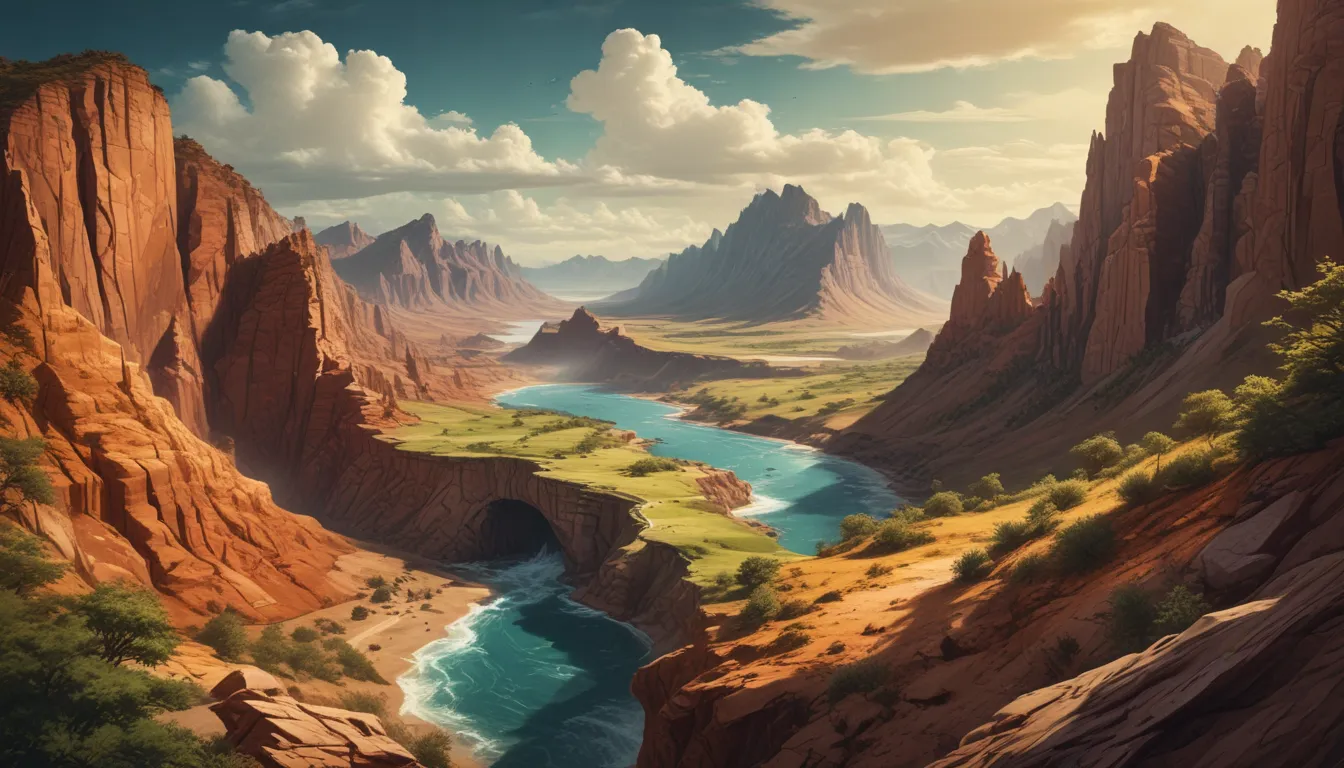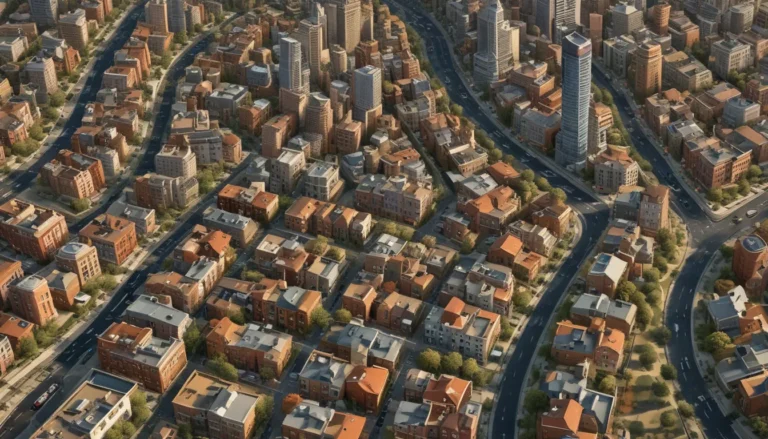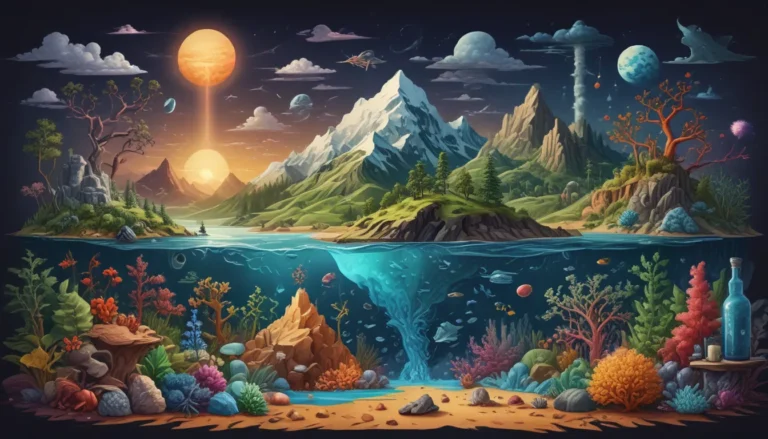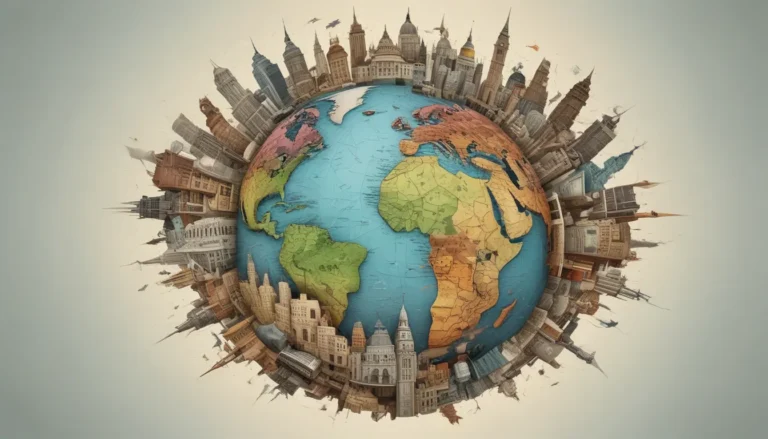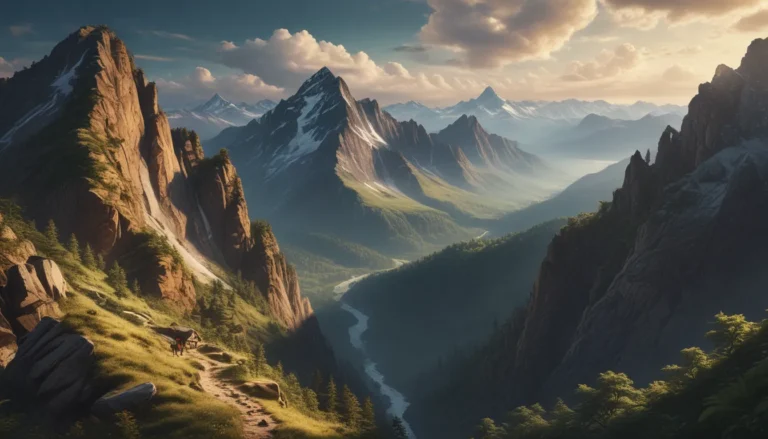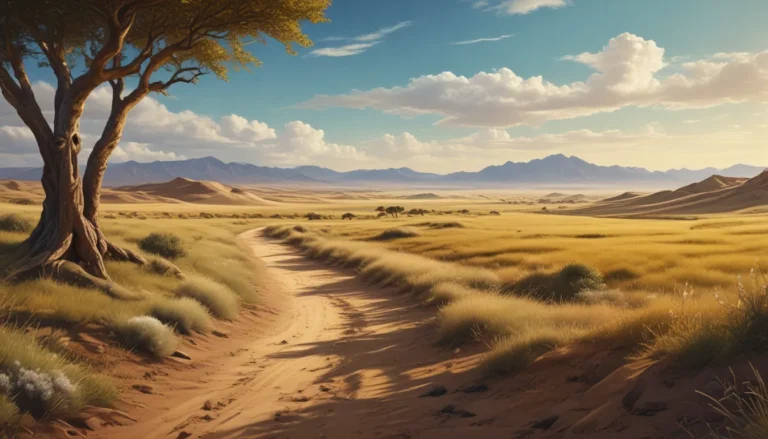A Note About Images: The images used in our articles are for illustration purposes only and may not exactly match the content. They are meant to engage readers, but the text should be relied upon for accurate information.
Have you ever marveled at the breathtaking beauty of the Grand Canyon or stood in awe of the dramatic fjords of Norway? These captivating landscapes are just a glimpse of the incredible erosional landforms that adorn our planet. Shaped over millions of years by the forces of nature, these geological wonders offer a window into the Earth’s dynamic history. Join us as we embark on a journey of discovery to uncover 20 captivating facts about erosional landforms that will leave you in awe of the natural wonders that surround us.
The Power of Erosion: A Force of Nature
Erosional landforms are the result of millions of years of sculpting by the relentless forces of nature. From towering cliffs to rugged coastlines, these geological features showcase the Earth’s incredible patience and power of erosion.
A Global Phenomenon: Erosional Landforms Across the Globe
Erosional landforms can be found in every corner of the world, from majestic canyons to stunning arches. No matter where you go, these geological wonders never fail to captivate us with their diverse shapes and sizes.
Nature’s Sculptors: The Forces Behind Erosional Landforms
Wind, water, and ice play a crucial role in shaping erosional landforms. Their relentless actions carve out valleys, cliffs, and arches, creating mesmerizing landscapes that tell a story of the Earth’s ever-changing surface.
The Artistry of Erosional Landforms: Shapes and Sizes
From glaciers to sandstone formations, erosional landforms come in a variety of shapes and sizes. Each formation showcases the artistic precision of nature and highlights the power of erosion in shaping our planet.
The Patience of Nature: Millions of Years in the Making
The transformation of landscapes into erosional landforms is a slow and gradual process that can span millions of years. This remarkable timeline illustrates the patience of nature and the enduring power of erosion.
Unlocking Earth’s Secrets: Erosional Landforms as Clues to the Past
Studying erosional landforms provides valuable insights into the Earth’s geological history. By examining these formations, we can unravel the changes that our planet has undergone over time, offering a glimpse into the Earth’s ancient past.
Diverse Ecosystems: The Habitats of Erosional Landforms
Erosional landforms are home to a wide range of plants, animals, and microorganisms, creating unique and biodiverse ecosystems. These habitats provide a haven for wildlife and contribute to the rich tapestry of life on Earth.
Breathtaking Views: The Beauty of Erosional Landforms
Whether it’s the grandeur of the Grand Canyon or the stunning rock formations of the Giant’s Causeway, erosional landforms offer breathtaking views that never fail to leave us in awe. These geological wonders are nature’s masterpieces, inviting us to appreciate the beauty of our planet.
Ever-Changing Landscapes: The Dynamic Nature of Erosional Landforms
Erosional landforms are constantly evolving and being reshaped by the ongoing forces of erosion. From coastal areas to desert landscapes, these geological features undergo continuous transformation, highlighting the dynamic nature of our planet.
Coastal Erosion: Landforms Along the Coast
Coastlines are prime locations for the formation of erosional landforms, with wave action and tidal forces shaping cliffs, sea stacks, and other fascinating features. These coastal formations are a testament to the unrelenting power of erosion along the shores.
Desert Wonders: Erosional Landforms in Arid Regions
The relentless winds of the desert create unique erosional landforms, such as sand dunes, mesas, and buttes, adding to the mystique of these arid regions. These geological wonders showcase the intricate beauty of desert landscapes shaped by erosion.
Glacial Transformations: Erosional Landforms in Icy Realms
Giant glaciers have the power to carve out breathtaking valleys, fjords, and cirques, leaving behind stunning erosional landforms as evidence of their presence. The sculpting power of ice creates mesmerizing landscapes in glacial regions around the world.
Mountain Marvels: Erosional Landforms in High Altitudes
The sculpting power of ice and water has shaped mountainous regions into fascinating erosional landforms, such as rugged peaks, deep gorges, and U-shaped valleys. These geological features showcase the enduring impact of erosion in shaping mountain landscapes.
Natural Architect: Erosional Landforms Creating Bridges
The erosion of rock bridges can create natural arches and bridges, such as the famous Delicate Arch in Arches National Park. These natural formations highlight the artistic precision of nature and add to the beauty of the landscape.
Underground Wonders: Caves and Caverns Formed by Erosion
The relentless erosion of limestone and other soluble rocks can create intricate cave systems and caverns that house stunning underground formations. These underground wonders showcase the transformative power of erosion below the Earth’s surface.
Majestic Cascades: Erosional Landforms Resulting in Waterfalls
The erosive power of rivers and streams can carve out steep cliffs and create majestic waterfalls, adding both beauty and drama to the landscape. These cascading marvels highlight the relentless force of erosion in shaping the Earth’s surface.
Coastal Charm: Erosional Landforms Shaping the Shoreline
The constant pounding of waves against cliffs and shorelines contributes to the erosion and formation of captivating coastal landforms, such as sea caves and sea arches. These coastal features add charm and character to our coastlines, showcasing the ever-changing nature of erosional landforms.
River Carvings: Erosional Landforms Along River Valleys
River valleys are often the result of erosion, with rivers slowly carving and shaping the land over time. The meandering channels and stunning valleys created by rivers highlight the transformative impact of erosion on the landscape.
Canyon Creation: Erosional Landforms Forming Grand Gorges
The relentless erosion of rock layers by rivers can create awe-inspiring canyons, such as the iconic Grand Canyon in the United States. These deep gorges showcase the power of erosion in shaping dramatic landscapes and leaving behind monumental landmarks.
Appreciating Earth’s Sculptures: A Conclusion on Erosional Landforms
In conclusion, erosional landforms are not just visually stunning but also fascinating geological formations that shape our planet’s surface. From towering cliffs to majestic canyons, these landforms serve as a testament to the powerful forces of erosion that have sculpted our landscapes over millions of years. Each formation tells a unique story of the Earth’s ever-changing surface, inviting us to appreciate the dynamic nature of our planet and the relentless power of erosion.
Unveiling More Wonders: FAQs on Erosional Landforms
-
What causes erosional landforms?
Erosional landforms are primarily shaped by the forces of water, wind, ice, and gravity. These natural elements gradually wear away rocks and soil, creating the diverse landscapes we see today. -
How long does it take for erosional landforms to form?
The formation of erosional landforms is a slow process that can take thousands or even millions of years. Factors such as the type of rock, climate, and erosional force intensity determine the timeline for landform development. -
What are some famous erosional landforms?
Examples of famous erosional landforms include the Grand Canyon in the United States, the Great Barrier Reef in Australia, the Cliffs of Moher in Ireland, and the Victoria Falls in Africa. -
How do erosional landforms contribute to the landscape?
Erosional landforms add diversity and unique features to the landscape, shaping valleys, cliffs, rock formations, and natural landmarks. These geological wonders create a varied and captivating environment for us to explore. -
Can erosional landforms change over time?
Yes, erosional landforms are dynamic and subject to change due to various factors like climate variations, tectonic activities, and ongoing erosion processes. These changes can occur gradually over time or suddenly through events like landslides or earthquakes.
Uncover the beauty and wonders of erosional landforms as you delve into the captivating world of Earth’s geological marvels. Explore the diverse landscapes shaped by erosion and discover the intricate formations that adorn our planet’s surface. With each new insight, enrich your knowledge of geography and deepen your appreciation for the dynamic forces that shape our planet. Embrace the awe-inspiring beauty of erosional landforms and celebrate the remarkable artistry of nature’s sculpting abilities.
As you embark on your journey to uncover the marvels of erosional landforms, remember that each formation holds a story of the Earth’s ever-changing landscape. Enrich your understanding of our planet’s geological wonders and appreciate the intricate beauty that surrounds us. Let the captivating world of erosional landforms inspire you to explore, learn, and marvel at the incredible forces that have shaped our planet for millions of years.
